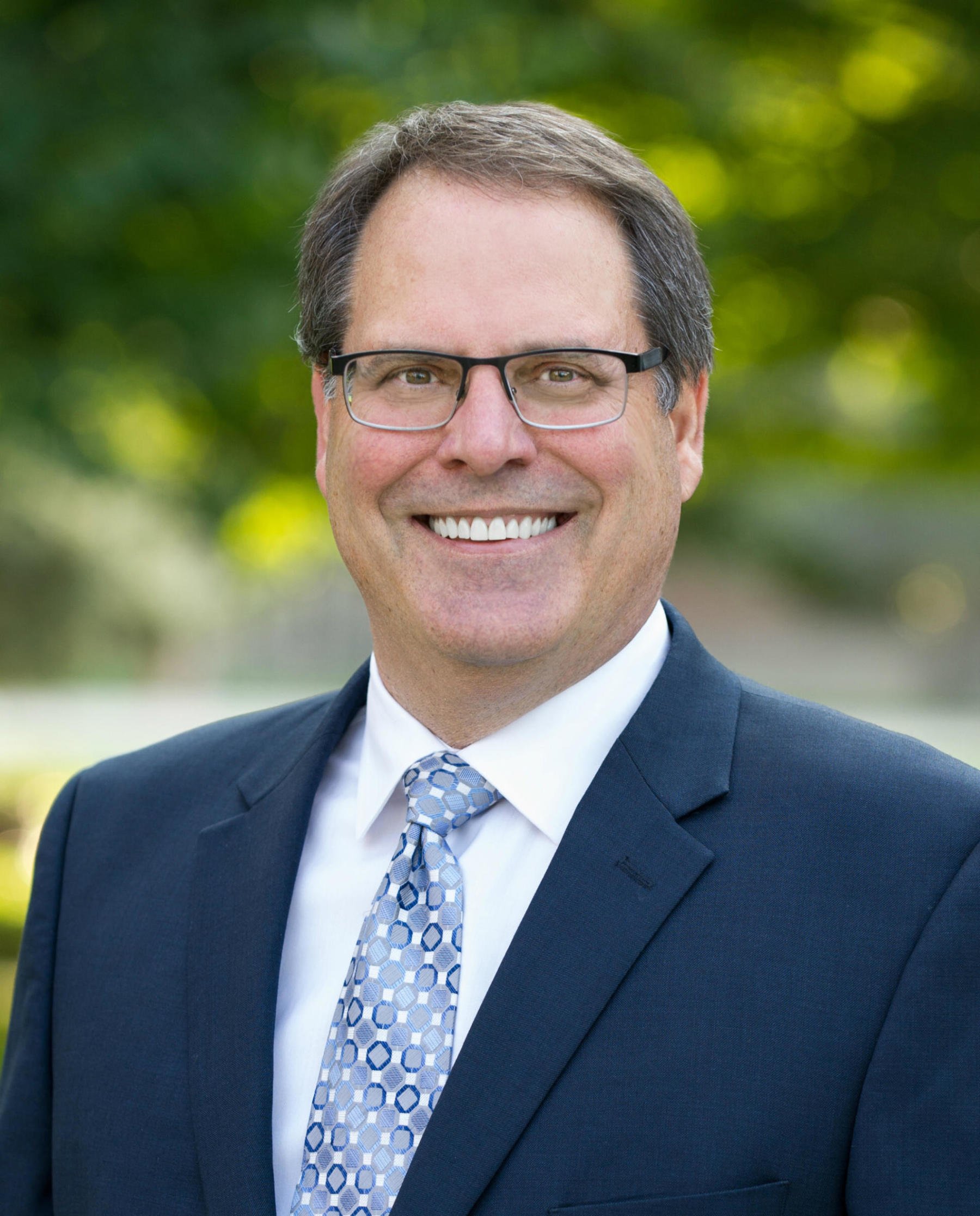On July 25, 2018, Dr. Mark Rudin was named the sole finalist for the position of president of Texas A&M University-Commerce. Rudin, a founding member on the CAES Steering Committee had been Boise State University’s vice president for Research and Economic Development since 2007. Before departing for his new position, Rudin addressed his time in the Treasure Valley, his thoughts on education, and CAES’s bright future.
By Ethan Huffman, CAES Communications
With a newly conferred doctorate degree in medicinal chemistry and health physics from Purdue University, a young Mark Rudin ventured west from his home in Illinois to a research position at the Idaho National Engineering Laboratory. It was 1989, and Rudin was hired to support the U.S. Department of Energy’s National Low Level Waste Management Program.
Along with a team of researchers, Rudin was tasked with identifying and developing new technology and processes to treat the tens-of-thousands of cubic meters of contaminated transuranic wastes shipped to Idaho following the World War II-era Manhattan Project. Transuranic waste commonly includes items like clothing, machinery and tools contaminated with artificially made, radioactive elements such as neptunium, plutonium and americium that have atomic numbers higher than uranium in the periodic table of elements.
While supporting the waste program, he also taught courses in environmental health physics and radiation instrumentation at Idaho State University. As an instructor, he gained valuable experiences by working closely with students in an academic setting. It’s a skill that would come in handy a few years later.
After three years supporting the waste program in Idaho, Rudin was offered a one-year assignment at the Department of Energy’s headquarters facility in Washington, D.C. As a technical assistant, he advised Leo Duffy, the Energy Department’s first director of the Office of Environmental Management, on the best technologies to characterize, treat and dispose of mixed nuclear waste streams. In 1993, Rudin returned west and dove head-on into academia.
I saw a job posting at UNLV (University of Las Vegas-Nevada) to be the program director of the Health Physics Department, said Rudin. It was an opportunity to get back into academics, and I’ve been here ever since.
A year before Rudin’s arrival at UNLV, the university completed construction on a five-story, 81,697-square-foot health sciences facility. With the health physics program expanding, the school needed an experienced leader. Rudin’s educational background and experience at DOE was a perfect match.
I spent 13 years at UNLV, working my way up the ranks. Eventually, I was appointed the vice president of Research and Economic Development, said Rudin. When President (Carol) Harter took a new position at the school, I started looking for a new opportunity too.
Becoming a Bronco
Having spent time in east Idaho, Rudin was familiar with Boise State University. But as he describes it, the job was attractive because the university was on the cusp of doing something big.
Here was this sleepy commuter university surrounded by a bunch of farm fields, said Rudin. But it was filled with talented faculty, a diverse and growing student population, and a great president. The culture was primed to grow, and in fact it did.
For 12 years, Rudin served at the university’s vice president of Research and Economic Development. During his tenure, Boise State’s enrollment grew by nearly 5,000 students, research funding increased by more than $26 million, and the university achieved a decade-long goal of being classified as a doctoral research institution by the Carnegie Classification of Institutions of Higher Education.
The school also built relationships throughout the community, leading to a $25M dollar investment by Micron Technology Inc. to construct a state-of-the-art materials science center, became a household name for their athletics program, and even hosted former U.S. President Barack Obama on campus in 2015.
I get too much credit for what’s been done here at Boise State. It’s really been a team effort, said Rudin. We really worked hard to let people know we were part of the Treasure Valley community, and I’m most proud of that effort.
Beyond the Treasure Valley, Boise State also grew its relationships around Idaho. They strongly supported and advocated for the creation of the College of Western Idaho in Caldwell, and they became a founding member of the Center for Advanced Energy Studies (CAES) in Idaho Falls.
The Value of CAES
Around the time Rudin arrived at Boise State University, Battelle Energy Alliance, the contractor that operates Idaho National Laboratory for the U.S. Department of Energy, was breaking ground on a collaborative research and education facility in Idaho Falls. The Center for Advanced Energy Studies (CAES) was designed to foster research relationships between the laboratory and the three public research institutions in the state of Idaho. Later, CAES would add the University of Wyoming to the mix.
Naturally, Boise State was a critical member of the center. And when Rudin speaks about the benefits of CAES, he’s quick to point out the value found in collaboration.
The days are done when a single researcher can solve a problem by his/her self, said Rudin. CAES is effective because it has a deep bench of talent to draw from. I know there are some grants and proposals we wouldn’t have gotten had it not been for our affiliation with CAES.
Rudin points to the people and capabilities found in Idaho, the expertise in nuclear energy and process control systems that helps propel research, and even economic development.
There are so many other states that want to have a CAES-like facility, said Rudin. At Boise State, I know we’ve been able to draw certain faculty and even students here because of CAES.
Perhaps most importantly, Rudin believes CAES provides unique, hands-on educational opportunities to students so long as they are open and willing to the challenge. Students, he says, have to own their education. Faculty instructors want every student to walk away with the chance to be successful.
As a student, you have to own your education, be aggressive and grab the bull by the horns, said Rudin.
A New Opportunity
Taking his own advice, Rudin’s new opportunity in the Lone Star state will draw on all of his past experiences with DOE, UNLV and BSU.
Located about 60 miles outside of Dallas, Texas A&M-Commerce has many characteristics in common with Rudin’s previous academic stops in Las Vegas and Boise. Described as an area that combines a rich rural life with the nearness of the nation’s fifth largest metropolitan area, the school is seen as a research hub and an economic engine in the area. And the presidency offers Rudin the chance to take everything he’s learned and experienced in his career and apply it to yet another opportunity.
According to Rudin, it’s both exciting and daunting at the same time. But with a solid team already in place, Rudin says he’s confident something special is about to happen at the school. And he even hints at the possibility of a future CAES-Texas A&M University-Commerce collaboration.
I hope there’s a way we can work with CAES in the future, said Rudin. Texas is rich in energy resources and needs, and there might be a role for CAES to play here. You can expect that I’ll be knocking on your door at some point.
Editor’s Note: Listen to an interview with Rudin from Texas radio station KETR:
http://www.ketr.org/post/conversation-dr-mark-rudin






